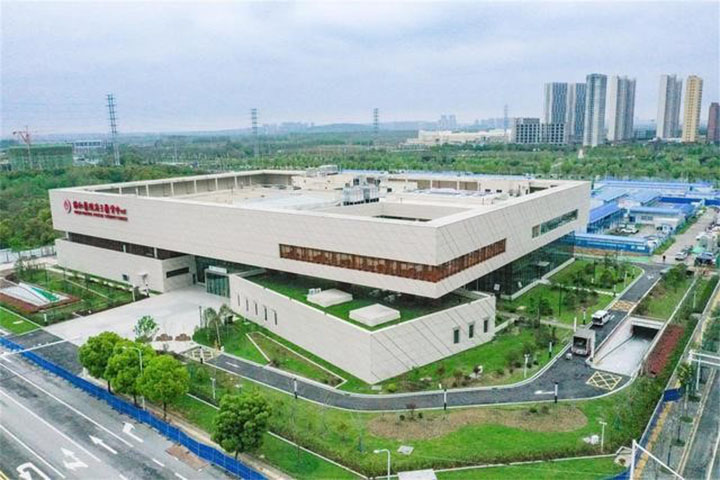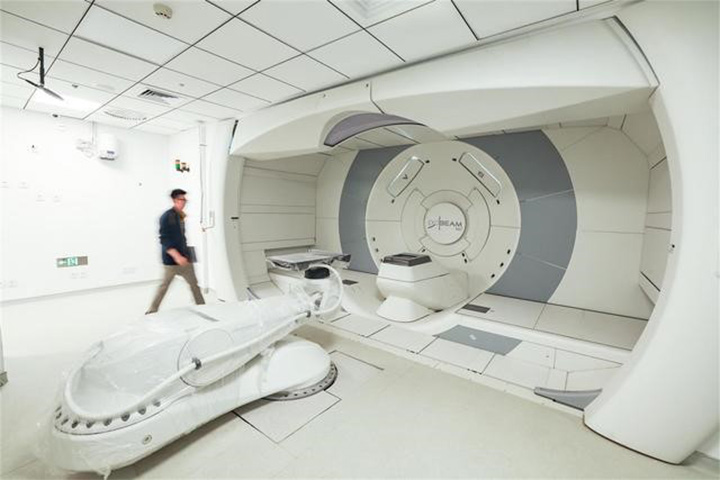FTTO Underpins Proton Therapy Center of Wuhan Union Hospital
This site uses cookies. By continuing to browse the site you are agreeing to our use of cookies. Read our privacy policy>
![]()
Enterprise products, solutions & services
On September 8, 2022, the Jinyinhu campus of Wuhan Union Hospital, China, began installation of Probeam360°, a proton radiotherapy system. It is only the third proton radiotherapy equipment in the world, and the first in Asia Pacific. It marks a new chapter in tumor diagnosis and treatment in Hubei province and Central China.
Proton therapy is the world's most advanced radiotherapy technology, far outperforming conventional photon radiotherapy. Generally, the proton equipment accelerates the proton beams to 70% of the light speed, about 200,000 km/s, to precisely target a tumor and minimize the harm to surrounding body tissue and organs. This kind of radiotherapy is precise to the nearest 1 ms.
To house the equipment, Wuhan Union Hospital constructed the Proton Therapy Center adjacent to its Jinyinhu campus. The therapy center, covering an area of 25,500 m2 in phase 1, has four radiotherapy rooms and labs. In April 2023, the construction for the Proton Therapy Center of Wuhan Union Hospital was completed. The center will start recruiting patients for clinical trials in January 2024, and open to the public in 2025. Once in use, it will be able to treat more than 1000 patients every year.
To support this world-leading tumor treatment system, Wuhan Union Hospital partnered with Huawei in infrastructure network innovation.

The Proton Therapy Center is as complex to construct as a nuclear power plant, due to the radiative nature of protons and heavy ions. As such, the building must comply with nuclear-level protection: zero cracks on major wall panels, zero subsidence of the main building, zero shock in device areas, zero congestion inside embedded pipes, accurate positioning of embedded parts, and high-density concreting. This is why the construction for a proton and heavy iron hospital is usually categorized as a super engineering project, which represents the strongest medical capability in a region.

The network infrastructure is also integral to the engineering. After discussion with the equipment vendor and related departments, the Wuhan Union Hospital Information and Data Center conducted an inquiry into network requirements, and found three major requirements for the infrastructure network of the Wuhan Union Hospital Proton Therapy Center.
The Proton Therapy Center is divided into the non-proton zone and proton zone. Radiography services such as magnetic resonance imaging (MRI) and computed tomography (CT) scans are mainly provided in the non-proton zone, which has high demands on network bandwidth and latency. In the proton zone, the proton therapy and treatment upgrade may require a higher bandwidth in the future. For this reason, the network needs to support high bandwidth, low latency, and smooth evolution.
As an additional challenge, in the proton zone, super-heavy concrete is used to build walls that are 6.5 m thick, and the total length of pipes routed inside the walls is up to 20,000 m, requiring simplified, durable, and future-proof network cabling.
Beyond that, Wuhan Union Hospital plans to integrate the Proton Therapy Center network with the original SDN campus network of the Jinyinhu campus to realize unified management and O&M.
With the existing network unable to meet these requirements, Wuhan Union Hospital turned its attention to the Huawei FTTO (fiber to the office) solution.
To address the new network requirements, Wuhan Union Hospital adopted the FTTO network solution. The solution uses intrinsically safe transmission medium, which is immune to interference and corrosion, and supports smooth network evolution. Just as important, bandwidth upgrade can be easily implemented by expanding the device and board capacity. And with full-link dual-homing protection and high redundancy, the network delivers outstanding reliability.
Thanks to the network architecture, the FTTO network realizes unified management and intelligent O&M. Gone are the days of one-by-one manual configuration, as the SDN controller in the Jinyinhu campus is used to issue network configurations to all ONUs. The multi-purpose network can carry various services with automatic configuration delivery, using network virtualization to isolate internal and external networks. Moreover, the network architecture is simplified, stable, and reliable. With the two-layer architecture, traditional cabinets and switches in extra-low voltage (ELV) rooms are replaced by passive optical splitters, which are more secure, reliable, and durable. In addition, the network supports ultra-high bandwidth and smooth evolution. Fibers are routed to ONUs, which are plug-and-play, and the bandwidth can be increased by upgrading OLT boards without re-cabling.
The end-to-end FTTO network is implemented by inserting small-sized 10G optical modules into the image reading and scanning devices to provide 10G bandwidth, enable image reading within seconds, and save space. And with fibers extended to the desktops, the cost of network cable routing is reduced dramatically.
High bandwidth: The Probeam360° provides built-in optical ports. The small form-factor pluggable (SFP) ONUs are compact and require no cables for installation, thereby eliminating the possibility of cable faults. They are applicable to all types of switchovers without service interruptions. The network interface card (NIC) bandwidth on devices that use SFP ONUs is displayed as 10 Gbps and the actual test rate can reach 1.53 Gbps, which can support image reading in seconds.
Easy upgrade: The FTTO network enables smooth bandwidth upgrade from 10G to 50G and even 100G without large-scale cable restructuring. During the upgrade, the platform is reused, and only service boards need to be replaced.
Simplified O&M: There are many devices and network cables deployed in traditional ELV rooms. Generally, the maximum distance for network cables is 100 m. This results in more ELV rooms being needed as the hospital campus becomes larger, causing complex O&M and costly reconstruction. The FTTO network uses PON technologies, so that no active device and power supply needs to be installed in ELV rooms. O&M workload is also greatly reduced as fibers are extended to terminals. What's more, the NCE system in the Jinyinhu campus of Wuhan Union Hospital supports intelligent O&M and network visualization, facilitating AI-based automatic fault detection.
To date, the Proton Therapy Center has constructed both wired (FTTO network) and wireless networks, creating a blueprint for other campuses to interconnect and centrally manage all campus networks for stable, secure, and reliable services.